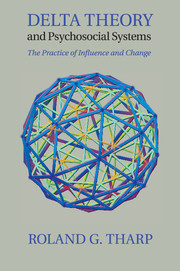Book contents
- Frontmatter
- Contents
- Figures
- Preface
- Acknowledgments
- Section One The Theory of Influence and Change
- 1 Introduction and Overview
- 2 Psychosocial Systems and the Exercise of Influence
- 3 The Zone of Proximal Development, Activity, and Semiotics
- 4 The Means of Influence
- 5 The Organization of Activity
- 6 Unifying the Study of Culture and Psychology
- Section Two The Practice of Influence and Change
- Appendix Criteria, Standards, and Guidelines Necessary for a Unified, Universal Theory
- References
- Index
3 - The Zone of Proximal Development, Activity, and Semiotics
Published online by Cambridge University Press: 05 December 2011
- Frontmatter
- Contents
- Figures
- Preface
- Acknowledgments
- Section One The Theory of Influence and Change
- 1 Introduction and Overview
- 2 Psychosocial Systems and the Exercise of Influence
- 3 The Zone of Proximal Development, Activity, and Semiotics
- 4 The Means of Influence
- 5 The Organization of Activity
- 6 Unifying the Study of Culture and Psychology
- Section Two The Practice of Influence and Change
- Appendix Criteria, Standards, and Guidelines Necessary for a Unified, Universal Theory
- References
- Index
Summary
Overview of Social Influence on Development
The foundational concept for this theoretical effort has come from the work of L. S. Vygotsky, the Russian psychologist active in the 1920s whose work began to influence thought worldwide some sixty years later. Although Vygotsky invoked concepts from phylogenetic formulations and other theoretical levels, the setting of his work was primarily in a pedagogical institute, and the problems he experienced practically and theoretically arose in issues of child development, both normative and pedagogical.
Vygotsky generated students, they generated students, and this line has now reached at least the fifth generation. This theoretical orientation has been called neo-Vygotskian, sociocultural, and Cultural-Historical Activity Theory (CHAT); it now has international associations, scholarly journals, and worldwide influence on social science research and theory. The majority of phenomena addressed by these groups continues to be early development, early socialization, and pedagogy. Of course there are notable exceptions; in the context of Delta Theory, there come to mind the programs of organizational behavior and development by Engeström (e.g., Engeström & Middleton, 1996) as well as a few forays into psychological treatment (Miltenburg & Singer, 1999; Tharp, 1999; Portes, 1999).
- Type
- Chapter
- Information
- Delta Theory and Psychosocial SystemsThe Practice of Influence and Change, pp. 24 - 37Publisher: Cambridge University PressPrint publication year: 2011

